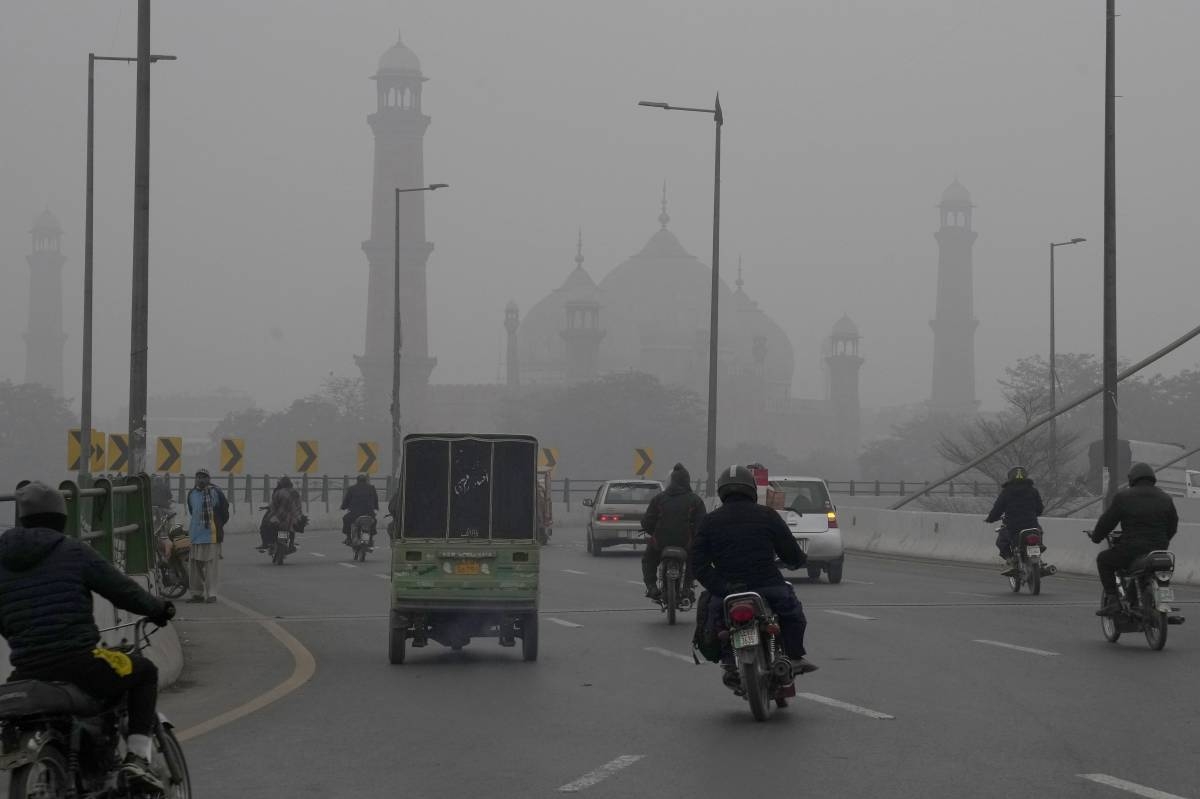The air in Lahore, Pakistan’s eastern city known for its gardens, has taken a turn for the worse. The once-famous city now suffers from severe air pollution, causing widespread health issues and disruptions to daily life. Despite efforts to combat the problem, including the deployment of artificial rain, the situation remains grim.
Lahore is located in an airshed, an area where pollutants from various sources, such as industry and transportation, become trapped due to local weather and topography. This phenomenon makes it difficult for the pollutants to disperse easily, leading to the accumulation of harmful substances in the air. Moreover, airsheds also contribute to cross-border pollution, with 30 percent of pollution in the Indian capital, New Delhi, originating from Pakistan’s Punjab province, where Lahore is situated. South Asia is home to six major airsheds, housing some of the world’s most polluted cities.
Experts emphasize the need for greater cross-border cooperation among countries like Pakistan, Bangladesh, and India to address air pollution collectively rather than on a city-by-city basis. However, achieving such cooperation is challenging due to the strained political relations in the region.
India and Pakistan have a history of conflict and animosity, with three wars fought between them. The two countries have heavily militarized their borders and possess nuclear weapons. Travel restrictions and bureaucratic hurdles limit people’s movement across the border for leisure, study, and work, although exceptions are made for religious pilgrimages.
Abid Suleri, a Pakistani analyst from the nonprofit Sustainable Development Policy Institute, highlights the importance of recognizing that air pollution knows no borders. The culprits and problems are the same on both sides of the India-Pakistan border, making it essential for neighboring provinces to adopt similar measures to combat pollution.
While political tensions hinder direct cooperation, regional and international forums provide opportunities for candid discussions on air pollution. Suleri suggests that countries should address air pollution as a year-round problem rather than a seasonal issue associated with cold weather.
Implementing airshed management requires a regional plan, but the upcoming election years in India and Pakistan, 2024, pose challenges to government-to-government cooperation. However, political leaders like Bilawal Bhutto Zardari, the former foreign minister and leader of a political party in Pakistan, have pledged heavy investment in climate adaptability, recognizing the urgency of the issue following devastating floods.
In India, air pollution is not typically a core issue that influences voters. However, the experience and impact of climate change could potentially change people’s voting behavior. Regional elections in New Delhi in 2020 saw air pollution-related promises from various political parties.
The World Bank suggests that a regional airshed management policy would involve countries setting common air quality targets and implementing measures to achieve them. Regular meetings to share experiences and, if possible, establishing common air quality standards would further enhance collaboration.
The World Bank estimates that nearly 93 percent of Pakistanis and 96 percent of Indians are exposed to severe pollution levels. With over 1.5 billion people affected by high concentrations of air pollution in just these two countries, the consequences are dire. The World Bank also estimates that around 220,000 deaths occur each year due to air pollution in South Asia.
Addressing air pollution in Lahore and other polluted cities in South Asia requires collective action. While political tensions may hinder direct cooperation between countries, regional initiatives and international forums can serve as platforms for dialogue and collaboration. It is crucial to recognize that air pollution is not confined by borders and that a regional approach is necessary to safeguard the health and well-being of the population.
Source: The Manila Times








